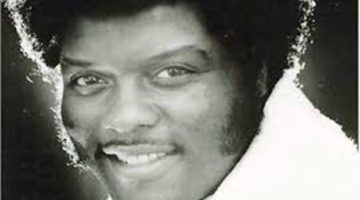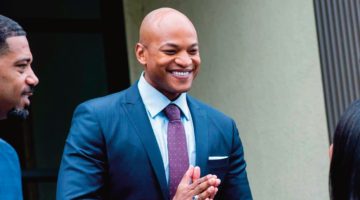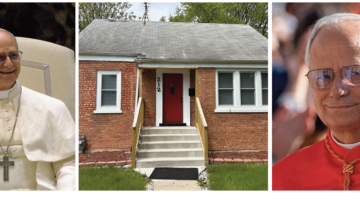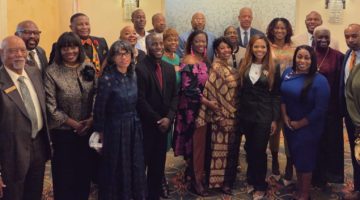 As black college enrollment increases, graduation rates among African Americans – many of whom are first generation college students – still show signs of struggle. However, faculty at Florida Memorial University say Historically Black Colleges and Universities play a critical role in filling the achievement gaps often inherited from underserved communities.
As black college enrollment increases, graduation rates among African Americans – many of whom are first generation college students – still show signs of struggle. However, faculty at Florida Memorial University say Historically Black Colleges and Universities play a critical role in filling the achievement gaps often inherited from underserved communities.
“It is still very important to have HBCUs,” said Doris Arnold, a student support mentor at Florida Memorial University. HBCUs date back to 1837. Congress, in 1965, defined black colleges and universities established before 1964 as HBCU. There are about 100 of them across the nation. While HBCUs exist, they are integrated schools.
Arnold said that HBCUs “offer African American students a place to earn a sense of identity and to be in a cultured environment where they learn about their heritage and their community.” She added that as opposed to other institutions, HBCUs nurture African-American students and challenge them to reach their highest potential.
This isn’t to say that other schools ignore its black population. From FMU’s standpoint, it does mean that certain students – especially those who are the first generation in the family to attend college – need a more customized approach.
“I feel like I fit in best here with people I can relate to,” said Johnny Jones, a senior at Florida Memorial University. The first-generation college student hopes to obtain an accounting degree. He said that college is exciting because he gets to do things his family hasn’t had a chance to experience. On the other hand, “It is stressful,” he said. “I can’t go to them and ask them ‘What did you do when you were going through a stressful time or couldn’t afford books?’” To help pay for college he works the overnight shift at a local grocery store. “I’m basically on my own with everything.”
He said it’s not the black atmosphere that makes FMU different; he knows a lot of white first-generation students on campus, too. “It’s easier to understand each other here because I think many of us share similar upbringings — not only the students, but professors and faculty members, as well,” Jones said.
He added that it just feels like one big family.
Some would agree that it’s this sort of environment that paved the way for American leaders such as W.E.B. Du Bois, an 1888 graduate of Fisk University; Martin Luther King, who graduated from Morehouse in 1948; and Toni Morrison, a 1953 graduate of Howard University.
FMU’s campus is located in Miami Gardens, a black-majority city with a population that exceeds 100,000 residents. Of the 101 higher education establishments in the state, four are HBCUs including Florida A&M University in Tallahassee; Bethune-Cookman University in Daytona; and Edward Waters College in Jacksonville.
According to the Thurgood Marshall College Fund, although three percent of the nation’s institutions of higher learning are HBCUs, they graduate nearly 20 percent of African Americans who earn undergraduate degrees.
In addition, these schools graduate more than 50 percent of African-American professionals and public school teachers.
The university proudly boasts of its famous graduates such as brothers, James Weldon Johnson and J. Rosamond Johnson, who are known for writing Lift Ev’ry Voice and Sing in 1900 and Barrington Irving, a 2009 graduate, who became the youngest pilot to fly around the world solo at the age of 23, in 2007. Irving is also the first African American to accomplish this task.
As an undergraduate, Irving studied aerospace, which is offered within the school’s Department of Aviation and Safety.
The National Urban League’s State of Black America 2013 study shows that despite an increase in college enrollment and achievement, the economic gap between whites and blacks has only marginally improved. The same report shows that for every dollar a white household makes, a black household acquires 60 cents, which is seven cents higher than it was 50 years ago, when blacks were bringing in 53 cents.
Couple that with 40 percent graduation rates at HBCUs – 15 percent below the national average of 55 percent – it’s evident that African Americas still have some ways to go before getting on equal footing with whites. FMU’s graduation rate stands two percent higher than the national average for historically black colleges.
Denise Callwood-Brathwaite, associate provost at FMU, said it’s important to look beyond the numbers. “We have to look at it from an individual perspective,” she said.
The graduation gap, she explained, has a lot to do with external factors. For example, more first generation college students attend HBCUs. These students are raised in poorer households with less opportunity and exposure.
“Many of our students are working several jobs just to put themselves through school,” she said while listing one of the many hurdles black colleges have to deal with that majority schools encounter less frequently.
The key to upward mobility is proper education, which is exactly what FMU is emphasizing.
“Our students come from homes and neighborhoods where they’re underperforming,” she said. “We bring them up to college level and then prepare them for the
workforce.”










No Comment